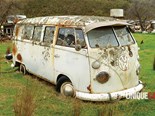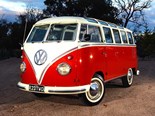1957 VW Kombi Transporter Type 1 Samba - Toybox















































|

|

|

|

|

|

|

|

|

|

|

|

|

|

|

|

|

|

|

|

|

|

|
Kombi collecting can be a head-scratcher, but can you really put a price on smiles per mile?
The current state of Kombi collecting can be a bit bewildering for those of us who remember them as little more than consumable white-goods. Yes, they birthed a massive beach-going subculture but in actuality they were a tremendously simple utility vehicle with a somewhat underpowered air-cooled four-pot boxer out back.
They’re notoriously simple, and were cheap to develop and produce in the post-war context when production began.
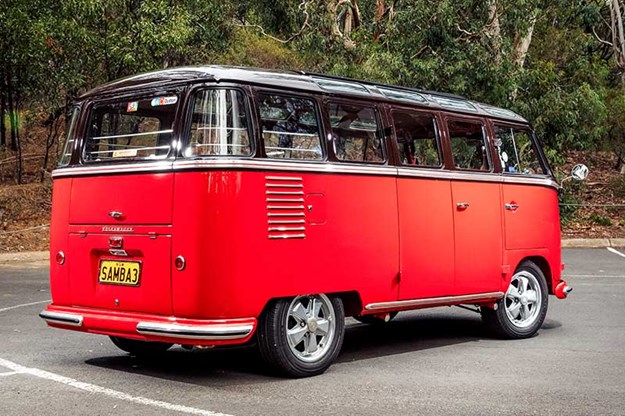 Fuchs wheels on a Kombi! That’s one for the books
Fuchs wheels on a Kombi! That’s one for the books
In decades past, you’d see them dumped on the roadside rusting away, and tips around the country were littered with the things. But it’s a very different story these days.
The current world record for a Samba bus is a whopping US$302,500 paid at auction in 2017 in the United States. Converted to Down Under-dollars, that’s an absolutely eye-watering Au$440,000. Which is a lot for what some might argue is little more than a rolling box.
| Read next: 1961 Volkswagen 23-window Microbus Safari
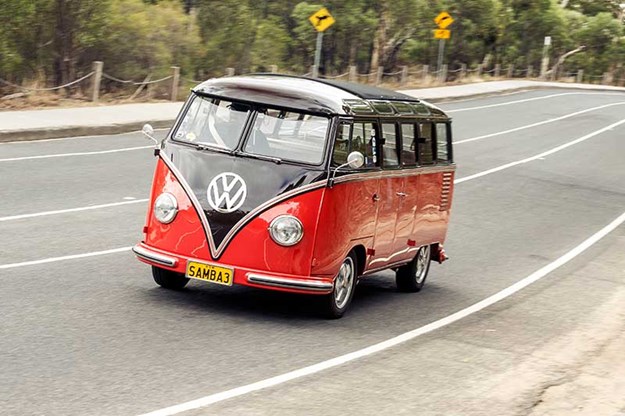
On local shores, our record breaker came in February 2015, when a 1960 23-window Samba sold for AU$202,000.
And these prices aren’t ridiculous outliers either…
But to understand the echelon of collectability they inhabit today, let’s go back.
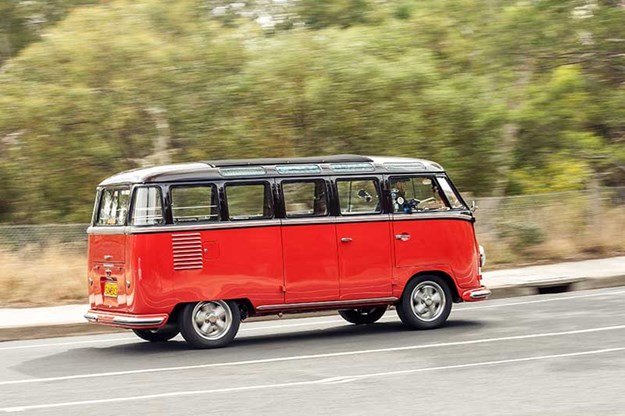 Panoramic views all round are part of the Samba package
Panoramic views all round are part of the Samba package
Volkswagen’s Beetle-derived commercial bus was launched in 1950, designated as the ‘Type 2’ given that it was just the second model line after the Beetle. The Microbus with windows and seats followed in 1951 with the top of the range being the Microbus ‘deluxe’ or "Samba".
| Read next: 1976 Volkswagen Kombi review
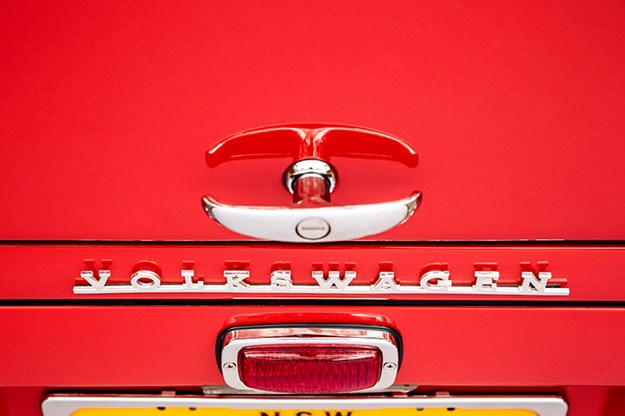
The first-generation Type 2 is the most collectible, affectionately known as the ‘Splitty’ due to the split, two-piece windscreen. The Splitty ended German (and Australian) production in 1968 when it was replaced by the revised model with a curved one-piece windshield. Brazil however, continued producing the split-window models up until the mid-70s.
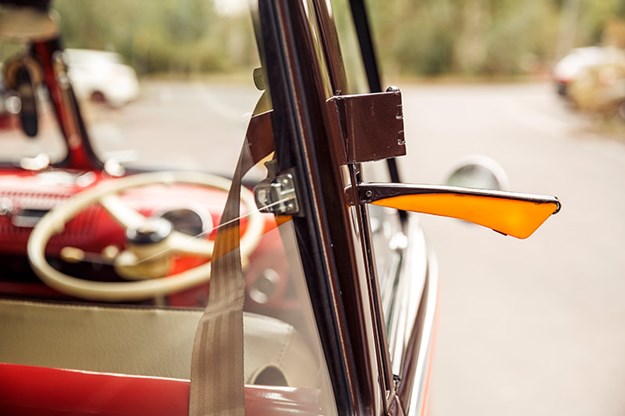
Interestingly, Australia was one of the first nations outside of Germany to produce Volkswagens. Aussie production began in mid-June 1954 in Clayton Melbourne, where cars were built up out of CKD (completely knocked- down) kits. Government mandated Australian content meant that by the early 60s, most of the Volkswagen sold in Australia were ‘Made in Australia’, with local businesses providing everything from tyres to paint, to nuts and bolts.
The highest spec Type 2 buses, as well as Karmann Ghias and Beetle Cabriolets continued to be imported whole from Germany.

Given the dwindling rate of survival, and the various options and variants available, the Samba’s extremely rare specifications saw this 1957 23-window Samba occupy the pinnacle of VW’s offerings at the time, and it remains the ultimate Kombi collectible today among the Microbus faithful. This bus was originally delivered new to the US, optioned exactly as you see it today.
It was painstakingly given a 100-point restoration by renowned Kombi specialists utilising both original and OEM components over 12 months and was completed in June 2012.
 This 2.4lt boxer promises better performance than the tepid efforts of standard Kombis
This 2.4lt boxer promises better performance than the tepid efforts of standard Kombis
The most eagle-eyed Kombi-spotters should look on with approval, down to the tiniest details – semaphore indicators, correct chrome trims, Wolfsburg steering wheel centre cap, Hella headlamps, Bakelite switch-gear and VDO gauges are all present and correct. It’s got some period-correct flavour courtesy of the Fuchs wheels, and 2.4lt CB performance engine with more than enough poke to send a breeze through the retractable cloth roof.
Now I’ve never quite understood the desire to own a Kombi, especially for the prices they’re commanding these days.
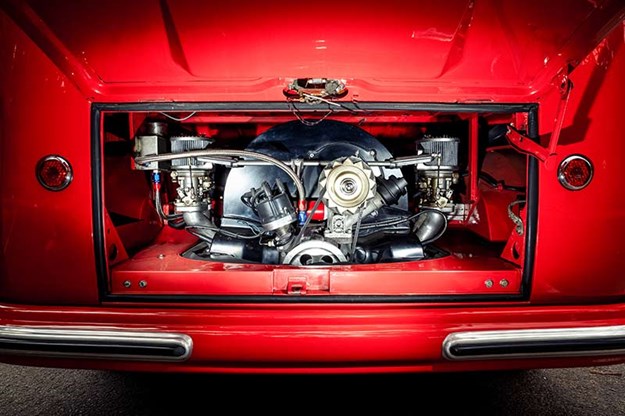
Maybe that’s because I’m a sports car guy – the Kombi drives like a bus… because it is a bus!
And the doors feel tremendously thin and tinny – you wouldn’t want to get in a bingle. But seeing this example in the sun whilst snapper Alistair goes to work, it’s hard to deny its visual presence.
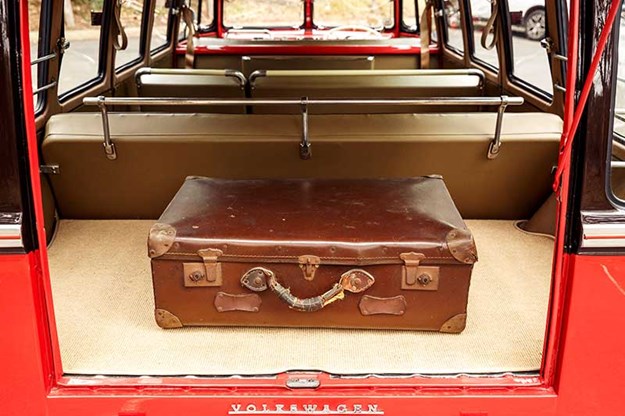
It’s a gorgeous thing, finished beautifully with all interior embellishments in place, and panel gaps millimetre perfect. It’s likely even better than when it left the factory in Wolfsburg back in the late-50s.
I guess, to critique it for how it drives misses the point. You don’t really drive a Kombi for yourself, you sort of drive it for others. The waves, the thumbs ups and the ‘toot toots’ you get in traffic prove that people love a Kombi!
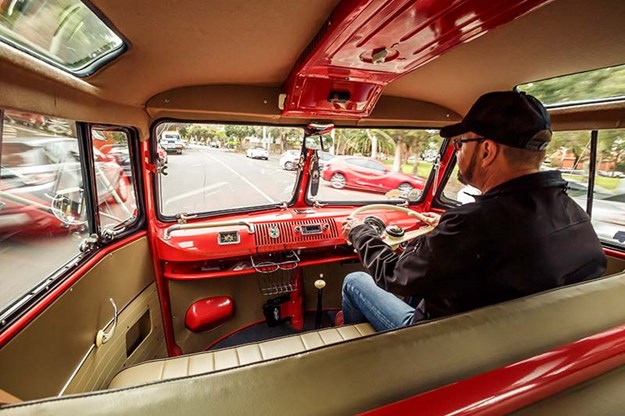 JB reckons driving a Kombi is a great way to meet new people
JB reckons driving a Kombi is a great way to meet new people
Driving a microbus is a unique experience. But it’s one that’ll have you grinning from ear to ear more often than not.
We can talk in circles about the money these things bring, but in the end it’s about supply and demand. If you want this example of ‘the most collectible Kombi of all time’ – it’s on sale in Sydney at the Classic Throttle Shop.
 Kombi instrumentation is a perfect example of minimalism
Kombi instrumentation is a perfect example of minimalism
KOMBI VALUES
Breaking glass ceilings Kombi values can be hard to get your head around, given the plethora of variants available. Roughly speaking, more windows equates to more money. Split-windshield? More money. Barn doors as opposed to sliding doors? More money again.
For first-gen Type 2s, you’re looking at a minimum of $30,000 for a simple bay window.
First-gen split-windows will start at $80,000-$90,000 with values quickly surging north depending on condition, specification and originality. And of course the number of windows, be they 11, 13, 15, 21 or 23.

Second-generation T3s, are nowhere near as collectible as first-generation Type 2s; but have certainly shored up with plenty of headroom in the future as original T2s become more and more scarce. This is the smart entry-point if you’re after the Kombi ‘way of life’ without the price-tag to match. $20,000 to $30,000 will see plenty to play with in this sector.
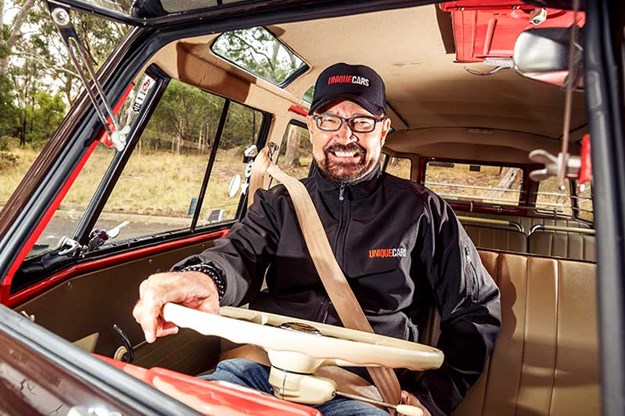
1957 VW Kombi Transporter Type 1 Samba (Factory Specs)
ENGINE: 1192cc four-cylinder boxer
POWER: 22kW @ 3400rpm
TORQUE: 81.4Nm @ 2000rpm
TRANSMISSION: 4-speed manual
BRAKES: 250mm drums (front & rear)
SUSPENSION: Independent, torsion bar, trailing link (f), Independent, swing axle, torsion bar (r)
Classic Australian Family Car Value Guide home page
Muscle Car Value Guide home page
Japanese Classic Car Value Guide home page
Unique Cars magazine Value Guides
Sell your car for free right here
Get your monthly fix of news, reviews and stories on the greatest cars and minds in the automotive world.
Subscribe

.jpg)









